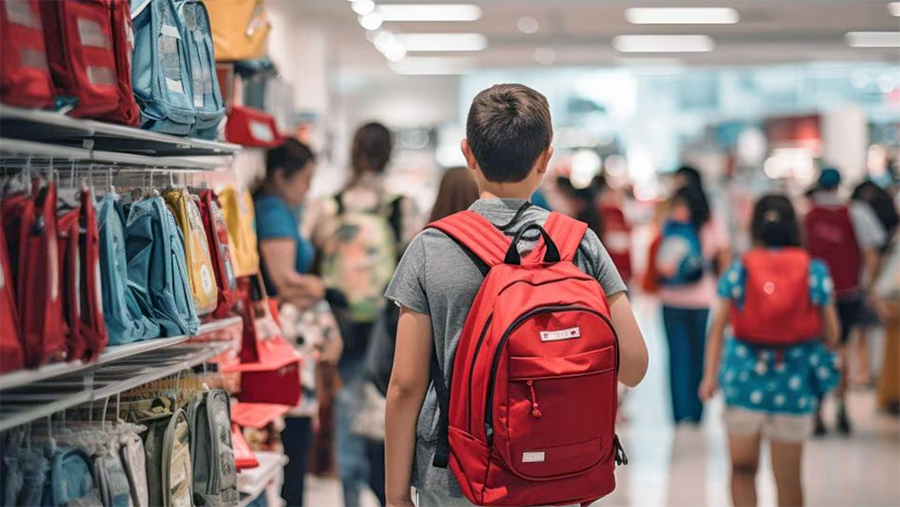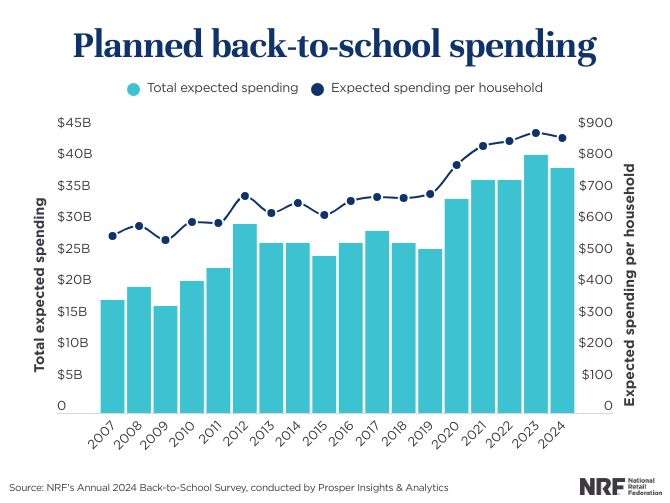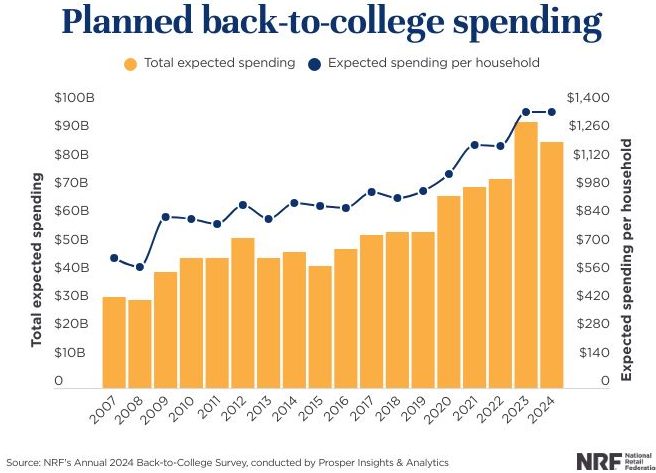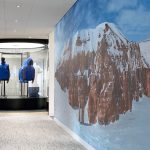The National Retail Federation (NRF) reports that as of early July, over half (55 percent) of shoppers for back-to-school (BTS), including college, had started buying goods for the 2024/25 school year, according to the annual survey released by the NRF and Prosper Insights & Analytics.
“The back-to-school and college season is an important time for retailers and consumers,” said Katherine Cullen, VP of industry and consumer insights at the NRF. “Families and students are eager to get a jumpstart on their shopping for the start of the school year. Retailers have anticipated this early demand and are well-positioned to offer a variety of products at competitive prices.”
The NRF noted in the report that while BTS shopping is underway, most (86 percent) consumers still have at least half of their purchases left to make. The top reasons are that they are waiting for the best deals (45 percent) or have yet to identify what is needed (45 percent).
According to NRF’s analysis, consumers have noted when retailers kick off summer deals, including Target’s Circle Week, Amazon Prime Day, Deal Days, and Black Friday in July.
“Similar to last year, 85 percent of back-to-class shoppers said they will take advantage of Prime Day and other retailer sales in July to buy classroom staples and other school necessities,” NRF said in a media release outlining its survey results.
According to the NRF’s survey data, families with kids in K-12 plan to spend an average of $874.68 on clothing, shoes, school supplies, and electronics. The NRF reported this is approximately $15 less than last year’s record spend of $890.07 but is the second-highest dollar amount in the NRF’s survey history.
“Total back-to-school spending is expected to reach $38.8 billion, also the second-highest figure on record, after last year’s high of $41.5 billion,” the NRF forecasted.
“Last year’s watermark was partially driven by record investments in electronics, with 69 percent of back-to-school shoppers planning to purchase a laptop, tablet or other electronic device for their student,” said Prosper EVP of Strategy Phil Rist. “These are typically items students can use for several years, which may be why we are seeing slightly less interest in electronics this year.”
The survey data suggests that K-12 shoppers are budgeting an average of $309.35 for electronics ($13.7 billion total), $253.29 for clothing and accessories ($11.2 billion total), $141.62 for school supplies ($6.3 billion total), and $170.43 for shoes ($7.6 billion total).
Similar to past years, the NRF survey found that the most popular destinations for back-to-school shopping are online (57 percent), department stores (50 percent), discount stores (47 percent), clothing stores (42 percent), and electronics stores (23 percent).
“College students and their families are expected to spend an average of $1,364.75 on items for the upcoming school year, in line with last year’s record of $1,366.95,” the NRF noted. “Total back-to-college spending is expected to reach $86.6 billion, the second-highest figure in the survey’s history. Last year, total spending was forecast to hit a record $94 billion.”
The NRF survey found that the Top 5 categories for college spending include:
- $359.49, on average, for electronics ($22.8 billion total)
- $192.40 for dorm or apartment furnishings ($12.2 billion total)
- $171.06 on clothing and accessories ($10.9 billion total)
- $149.71 on food ($9.5 billion total)
- $112.60 on shoes ($7.1 billion total)
Similar to past years, the NRF reported that the top shopping destinations for back-to-college students and their parents are online (50 percent), followed by department stores (35 percent), discount stores (31 percent), and college bookstores, office supply stores and clothing stores (tied at 26 percent).
Since 2003, the NRF has conducted a comprehensive survey on back-to-class shopping trends. This year’s research included 7,533 consumers and was conducted July 1-8. The margin of error is plus or minus 1.1 percentage points.
To read more on the NRF survey and report, go here.
Image courtesy Johnson

















